

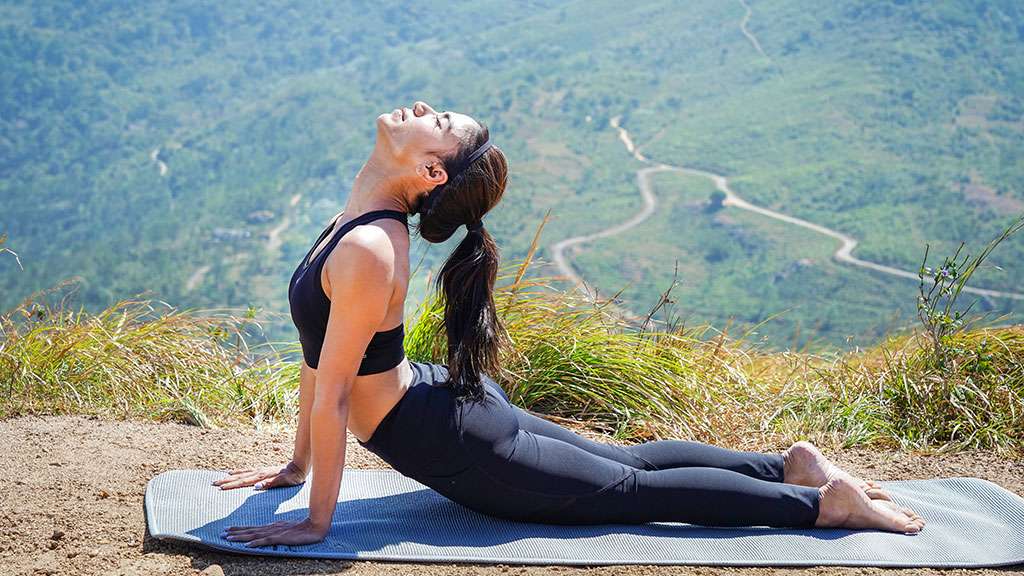
Reclining postures are those asanas that begin with the individual lying down.
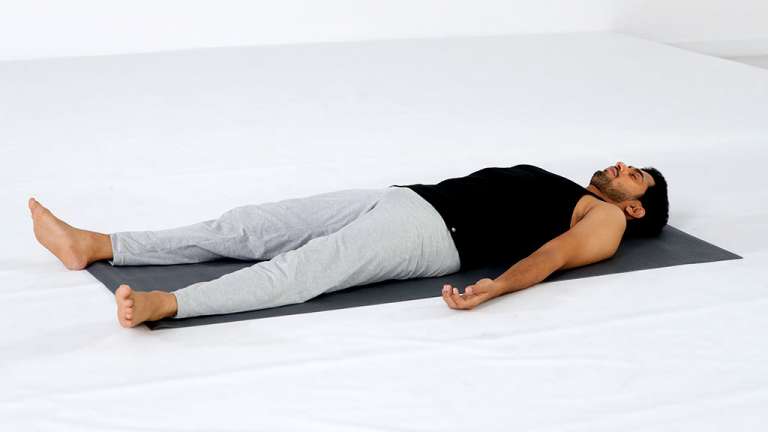
Yoga practices begin with Savasana and end with Savasana. The aim of this corpse posture is to obtain maximum rest for the mind and body and that too within a limited time. Savasana is good for the health of those who suffer from hypertension and insomnia. How to do Savasana? Lie down flat on your back. Stretch your arms and legs out and away from your body. Keep your eyes gently closed. Breathe evenly and attempt to relax. Ensure that your body is completely relaxed and focus on your mind. Practise regularly till you learn to focus, and can still your thoughts. The asana is meant to rest the body in a limited time. Practise the posture till you attain a sense of calm. Practise this posture before and after every yoga session.
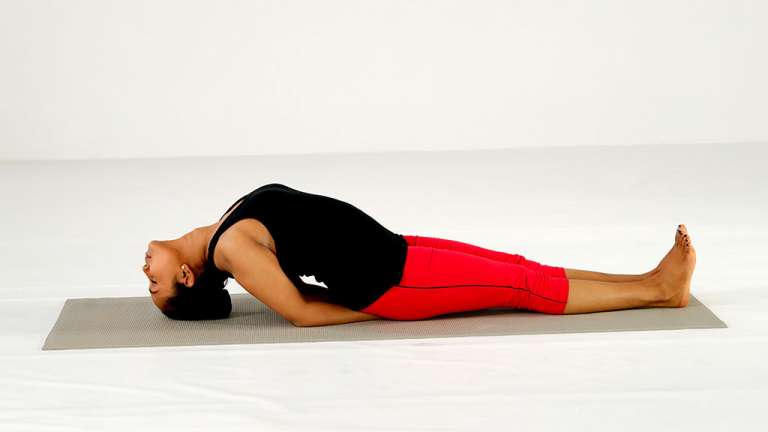
This reduces the stiffness in the muscles around cervical, thoracic and lumbar regions. It also strengthens the lungs. A good exercise to improve the health of asthma patients. How to do Matsyasana? Lie down flat on your back. Keep your feet together. Place your hands on the floor, palms facing downwards. Move your hands beneath your thighs, close to your buttocks. Keep your forearms firmly on the floor and lift your chest up by weighing down on your elbows. When your chest is off the floor, lower your head back till it touches the floor. Ensure that your elbows, and not your head, bear the weight of your torso. Breathe evenly as your body is now an arch. Maintain the posture for around a minute. To unwind from the posture, lift your head off the floor and straighten your back. Now, lower your torso completely onto the floor. Relax your body.
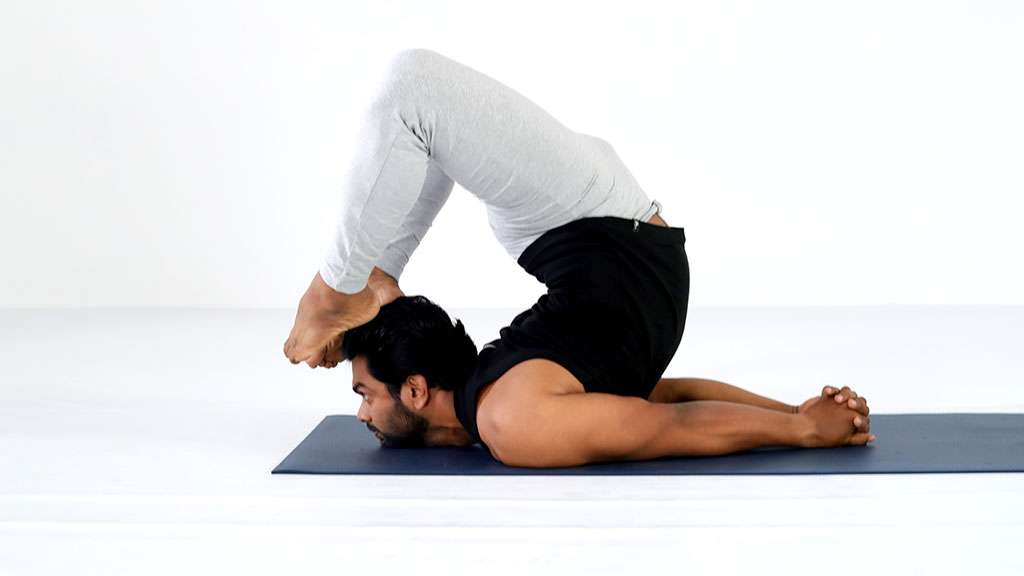
Good to strengthen the muscles and nerves in the shoulders and neck. Doing this asana regularly improves digestion. How to do Salabhasana? Lie down flat on your abdomen. Place your hands beneath your thighs. Rest your head on your chin - that is, your face must not be on the floor. Breathe deeply or a while. Inhale. Raise your legs as high as you can. Make sure your knees remain straight as your legs are lifted. Maintain the posture for about 5 seconds at the outset. With practice, increase the timing to about 30 seconds. Exhale. Lower your legs gradually onto the floor. Relax.
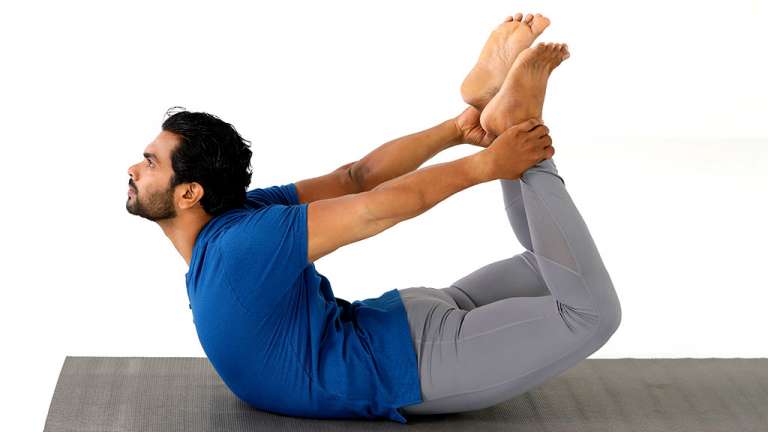
From a health point of view, Dhanurasana is good for the digestive system. The chest expansion while doing this asana brings in course of time relief to asthma and other respiratory problems. How to do Dhanurasana? Lie down flat on your abdomen. Ensure that your forehead is placed against the floor and that your legs are close together. Bend your legs at the knees and bring your feet up behind you. Stretch your arms backward and grasp your ankles. Inhale. Lift your head off the ground and simultaneously lift your thighs upwards. Your body should be arching upwards now. Maintain the posture for 10 seconds at the outset. As you practise, you can increase the timing to about one minute.
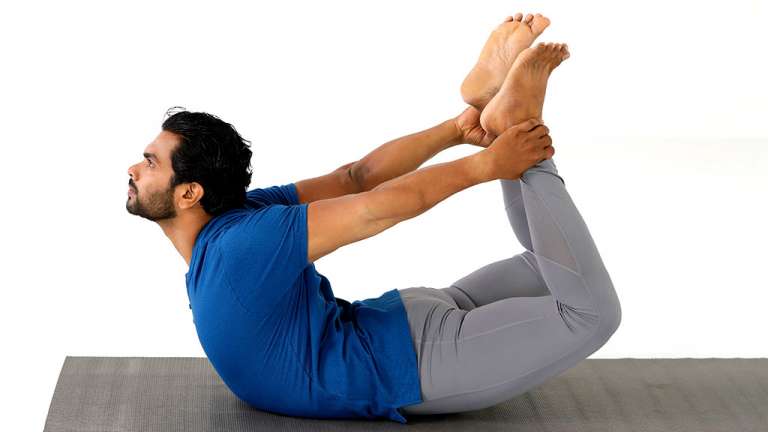
How to do Dhanurasana, a variation? Lie down flat on your abdomen. Ensure that your forehead is placed against the floor and your legs are close together. Bend your legs at the knees and bring your feet up behind you. Stretch your arms backward and grasp your ankles. Inhale. Lift your head off the ground and simultaneously lift your thighs upwards. Your body should be arching upwards now. Rock your body back and forth while maintaining the position. Inhale as you rock backward and exhale as you rock forwards.
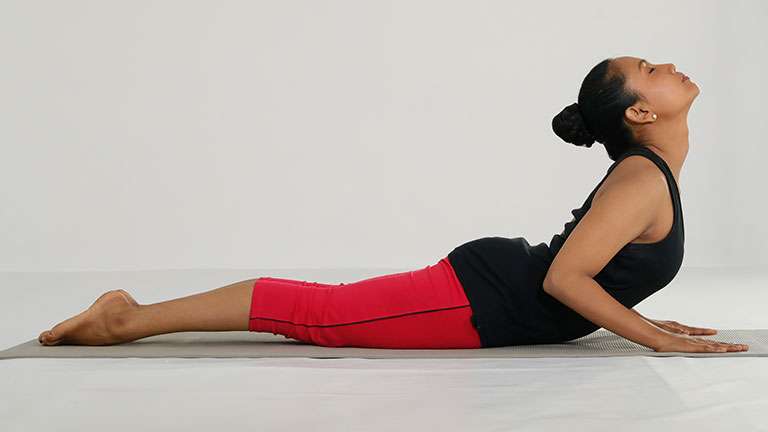
This asana enhances flexibility and strengthens muscles around the spinal column. The asana is a ‘guard’ against constipation and back pain. Adrenal gland, liver, and kidney are most benefited. How to do Bhujangasana? Lie down flat on your abdomen, in the relaxation posture. Cross your hands in front of you so you can place your head on them. Slowly bring your legs close together. Place your forehead on the floor. Move your arms so that they are folded at the elbow and your palms are close to your shoulders. Raise your elbows off the floor slightly. Inhale. Raise your forehead with your chin pushed out. Raise your torso from the ground. Ensure that your abdomen remains pressed to the floor. Reflect on the movement of a snake raising its hood and gradually feel the stretch of your spine. Maintain posture. Unwind slowly till your body is back flat against the floor. Keep your head lifted till your torso completely unrolls.

How to do a variation in Bhujangasana? Lie down flat on your abdomen, in the relaxation posture. Cross your hands in front of you so you can place your head on them. Slowly bring your legs close together. Place your forehead on the floor. Move your arms so that they are folded at the elbow and your palms are close to your shoulders. Raise your elbows off the floor slightly. Inhale. Raise your forehead with your chin pushed out. Raise your torso from the ground. Ensure that your abdomen remains pressed to the floor. Reflect on the movement of a snake raising its hood and gradually feel the stretch of your spine. Maintain posture. You are now in the Bhujangasana. Now, move your legs apart. Stretch your spine further by walking your hands backward, closer to your waist. Bend your legs at the knees and lift your feet as you curve your torso backward. Your feet should now touch your head.
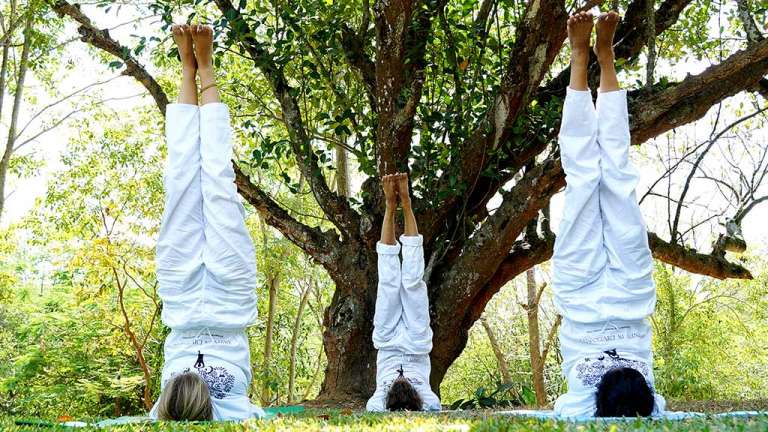
Gives a good stretch to the spine and makes it strong and flexible. Contributes to your health by improving blood circulation. Strengthens heart and lungs. How to do Sarvangasana? Lie down flat on your back. Keep your legs close together and your chin tucked in. Breathe deeply. Inhale. Lift your legs upwards till your feet are pointing directly up - that is, till your legs are perpendicular to your torso. Tuck your hands underneath yourself with your palms facing up. With your hands under your buttocks, prepare to raise your torso. Lift your torso gradually till you are resting on your shoulders. Your arms must now be bent at the elbow. Bring your hands to your back to support yourself. Your legs should be over your head. Slowly straighten your back. Keep your knees firm but relax your calf muscles now. Maintain the posture. To relax, lower your legs till your feet are at an angle of 45 degreesover your head. Lower your arms to the floor. Unwind gradually.
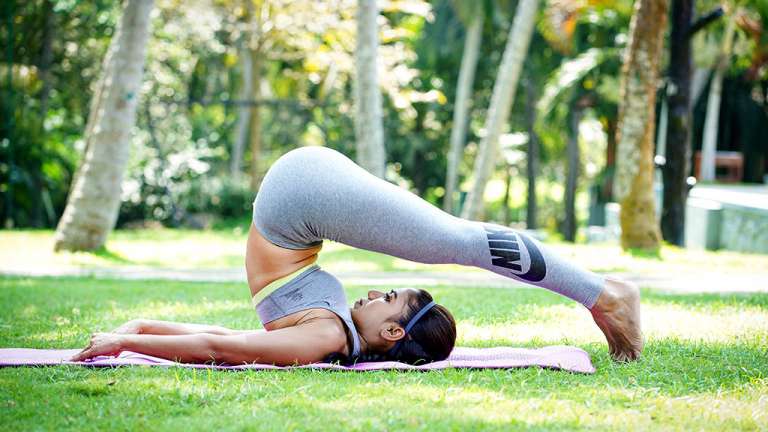
Improves blood circulation. Health problems related to indigestion and constipation are relieved. Muscles in the shoulders and cervical region are strengthened. How to do Halasana? Lie down flat on your back. Keep your legs close together and your chin tucked in. Breathe deeply. Inhale. Lift your legs upwards till your feet point directly up - that is, till your legs are perpendicular to your torso. Tuck your hands underneath yourself with your palms facing up. With your hands under your buttocks, prepare to raise your torso. Lift your torso gradually till you are resting on your shoulders. Your arms must now be bent at the elbow. Bring your hands to your back to support yourself. Your legs should be over your head. Slowly straighten your back. Keep your knees firm but relax your calf muscles now. Maintain the posture. You are now in the Sarvangasana posture. From here, lower your legs forward so that your feet touch the floor over your head. Now, bring your arms down flat on the floor. Breathe evenly and maintain this posture for about 30 seconds.
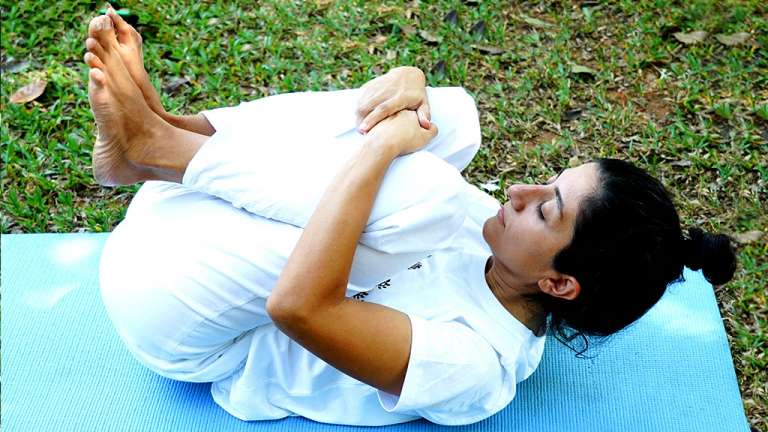
Relieves constipation & flatulence. Invigorates the reproductive system and improves its health. How to do Pavanamuktasana? Lie down flat on your back. Keep your legs and feet close together. Breathe evenly. Exhale. Raise your legs off the floor. Bend your raised legs at the knees. Ensure that your legs are still close together. With your hands, grasp the parts of your legs right below the knees. Pull your knees back towards your head. Now, lift your head off the floor and move it forward till your forehead touches your knees. Breathe evenly and maintain the posture for a few seconds. To unwind, straighten your legs out slowly and let your head rest back on the floor.